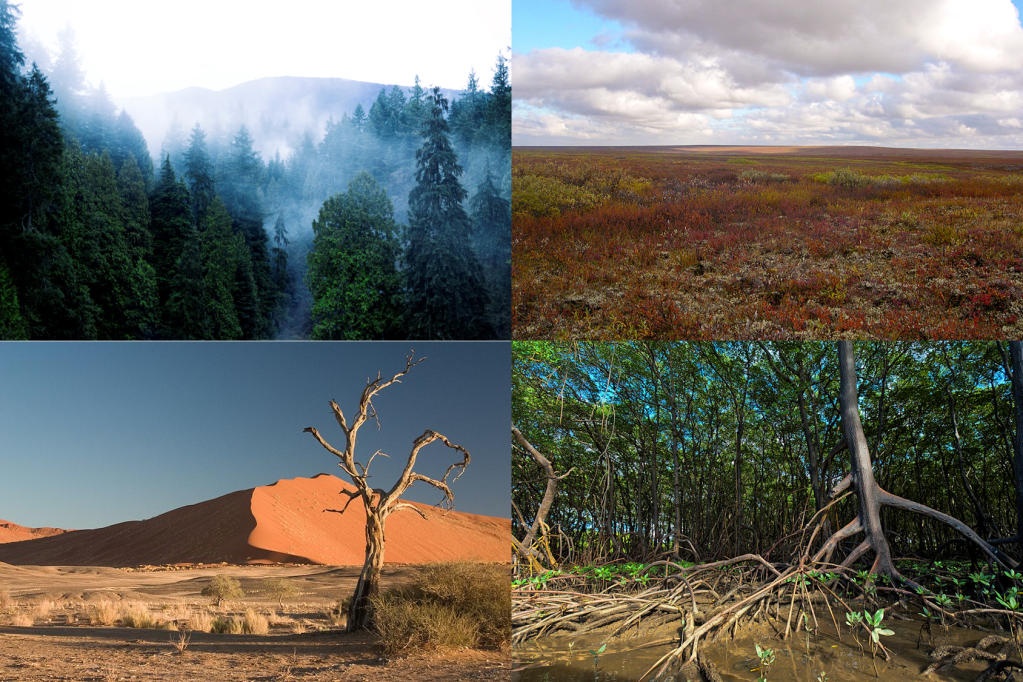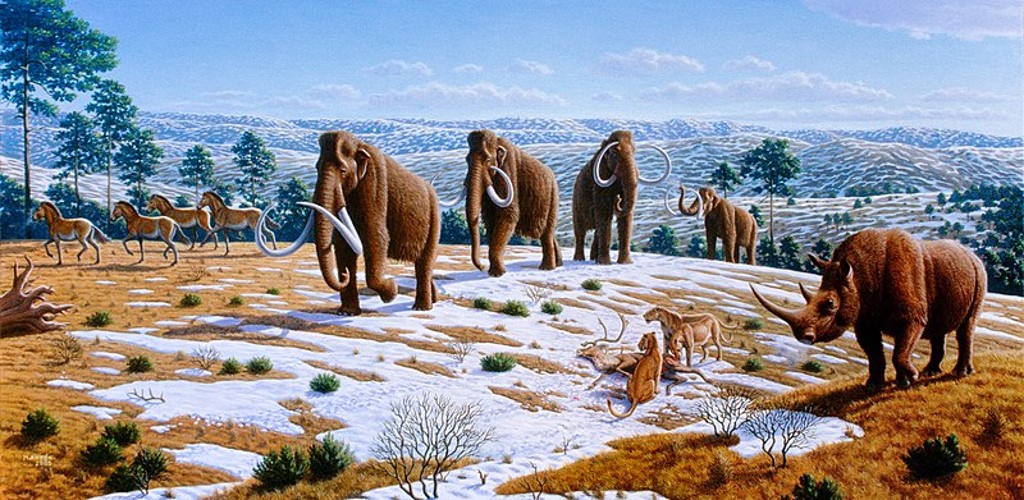Listen to Episode 115 on PodBean, YouTube, Spotify, or pick your favorite place for podcasts!
The Earth is covered in ecosystems, but what lives where is dependent on the local climate and landscape. This variation creates vast patterns in the distribution of life, patterns that scientists can use to understand ecology, and patterns that have changed over time as the Earth’s surface has transformed. This episode, we discuss the modern state and ancient history of Biomes.
In the news
Oligocene whale had both baleen and teeth
Major collection of poop shows the diet of little bush moas
Scale fossils reveal a possible mass extinction of sharks
Ancient plants and the origins of angiosperm seed structures
Classifying Biomes
Earth is home to a variety of biological communities (plants, animals, and more) that differ depending on local conditions. We call these communities biomes, and we make colorful maps to help us understand how biomes are spread around the globe. These classifications help scientists understand global patterns of ecosystems. Each biome comprises many habitats that are home to many ecosystems.

Image: Sten Porse, CC BY-SA 3.0
Biomes are strongly influenced by temperature, precipitation, altitude, and the shape of the local landscape, and they can often be recognized by the types of plants and animals found there. A region with cold temperatures and low precipitation might be a tundra; coastal, temperate biomes include Mediterranean forests and mangroves; and very warm regions (tropical/subtropical) with low precipitation might be grasslands or deserts. The total number of biomes on Earth varies depending on what definition you use, but in this episode, we refer to 14 biomes. Each biome can also be diverse! Tropical rainforests in South America and Africa may have similar conditions, but the plants and animals that live there are quite different.
When it comes to the fossil record, the best tools for identifying ancient biomes are plants and soils. The adaptations seen in fossil plants can be a sign of local conditions of temperature and precipitation, and the structure of paleosols (ancient soils) can indicate climate conditions, seasonality, and even what kinds of plants lived there. Animal fossils, too, can help in identifying ancient biomes. Tooth chemistry can be used to determine the kinds of plants an animal was eating – an indication of what biome it might have lived in – and the shape of an animal’s legs can be an indication of the kind of terrain it was moving through, whether grassland or forest.

Top right: Tundra, cold climate, low precipitation. Image: APL, CC BY 3.0
Bottom left: Desert, warm climate, low precipitation. Image: Luca Galuzzi, CC BY-SA 2.5
Bottom right: Mangrove, warm climate, coastal. Image: Jonathan Wilkins, CC BY-SA 3.0
A Brief History of Biomes
Earth hasn’t always looked like it does today, and it hasn’t always had the same biomes. Over geologic time, climate changes, continents move, mountains rise and recede, and all of these changes affect global patterns of temperature, precipitation, and the shape of landscapes – and so, biomes change.
When a new biome arises, it can change the world. The first terrestrial biomes (as we know them) would have been wetlands of the Early Paleozoic, home to non-vascular plants and semi-aquatic animals, as we see in Passage Creek, Virginia and the Rhynie Chert in Scotland. These early biomes laid the foundation for later terrestrial ecosystems. Later in the Paleozoic, the evolution of trees gave rise to the first forests, providing habitats for expansive evolution of plants and animals. In the middle Cenozoic, the development of grasslands changed the world yet again, giving rise to some of the most important ecosystems on our modern planet.

Image by Mauricio Antón, CC BY 2.5
And on the other hand, biomes can go extinct. The collapse of the Carboniferous rainforests was a major step in the shift from Paleozoic life to Mesozoic life. Polar forests, which provided lush homes for dinosaurs and more in the Arctic and Antarctic, disappeared as global climates cooled in the Cenozoic and ice overtook the poles. And the famous mammoth steppe, a vast grassland biome that spread across the northern hemisphere during the Ice Age, disappeared along with the key animals that maintained it when mammoths and other megafauna went extinct at the end of the Pleistocene. Even today, some biomes are endangered by changing conditions, including cold-climate alpine and tundra biomes, as well as coastal mangroves.
Learn More
Emmons and Gentry, 1983. Tropical Forest Structure and the Distribution of Gliding and Prehensile-Tailed Vertebrates (technical, paywall)
Tomescu et al. 2007. Cyanobacterial macrophytes in an Early Silurian (Llandovery) continental biota: Passage Creek, lower Massanutten Sandstone, Virginia, USA (technical, paywall)
—
If you enjoyed this topic and want more like it, check out these related episodes:
- Episode 114 – Polar Life
- Episode 128 – the Deep Sea
- Episode 95 – The Carboniferous Rainforest Collapse
- Episode 38 – Grass
- Episode 73 – Trees
We also invite you to follow us on Twitter, Facebook, or Instagram, buy merch at our Zazzle store, join our Discord server, or consider supporting us with a one-time PayPal donation or on Patreon to get bonus recordings and other goodies!
Please feel free to contact us with comments, questions, or topic suggestions, and to rate and review us on iTunes!